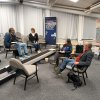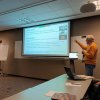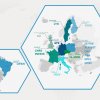In September 2023, a meeting of the Consortium Council managing the thematic core service concerning anthropogenic hazards (TCS AH), operating as part of the European Plate Observing System (EPOS) project, was organised in Luleå (Sweden) by the Luleå University of Technology (LTU). Members of the Council include representatives of 13 countries forming the consortium. The Central Mining Institute and Polska Grupa Górnicza represent the mining industry among the Polish consortium members from scientific institutions.

EPOS TCS AH provides open data through the EPISODES platform in order to support both research and training in terms of induced seismicity and hazards related to the exploration and extraction of georesources. With the support of various European institutions involved in the established consortium, TCS AH coordinates the integration and access to sites, data sets and effects of research concerning anthropogenic hazards. During the meeting in Luleå, new authorities of the Consortium Council were appointed, a plan of action for the year 2024 was prepared, and the location of next year’s session was chosen.
To take advantage of the presence of specialists in mine seismicity, the Luleå University of Technology organised workshops on mining and post-mining seismicity, attended by postgraduates of the University, geophysicists from Swedish mines, and researchers of project PostMinQuake (PMQ), which is financed by the Research Fund for Coal and Steel (RFCS). The PMQ project researchers shared the results of research on seismicity induced by the flooding of European hard coal mines, in the form of five presentations, two of which were conducted remotely. The workshops were attended by about 60 specialists from Europe and other distant countries such as Brazil, Iran, Namibia, Argentina and Tanzania. The GIG representatives presented two reports regarding mining and post-mining seismicity. To conclude the workshops, the participants formulated the primary directions for further research related to both the aforementioned types of seismicity provoked by mining activity.





